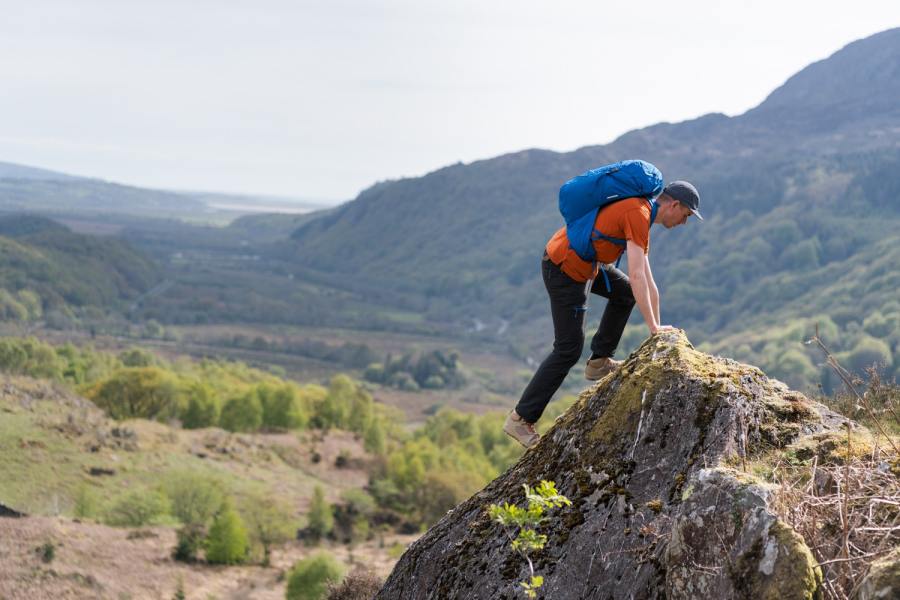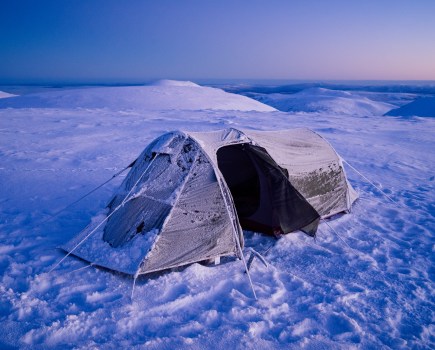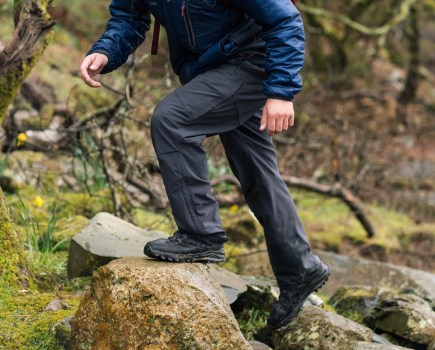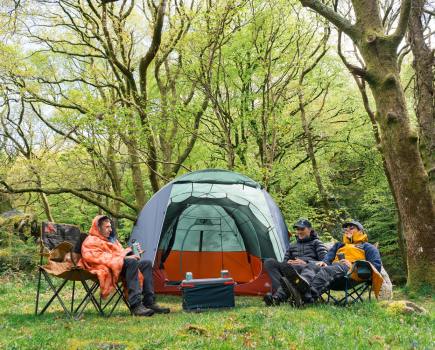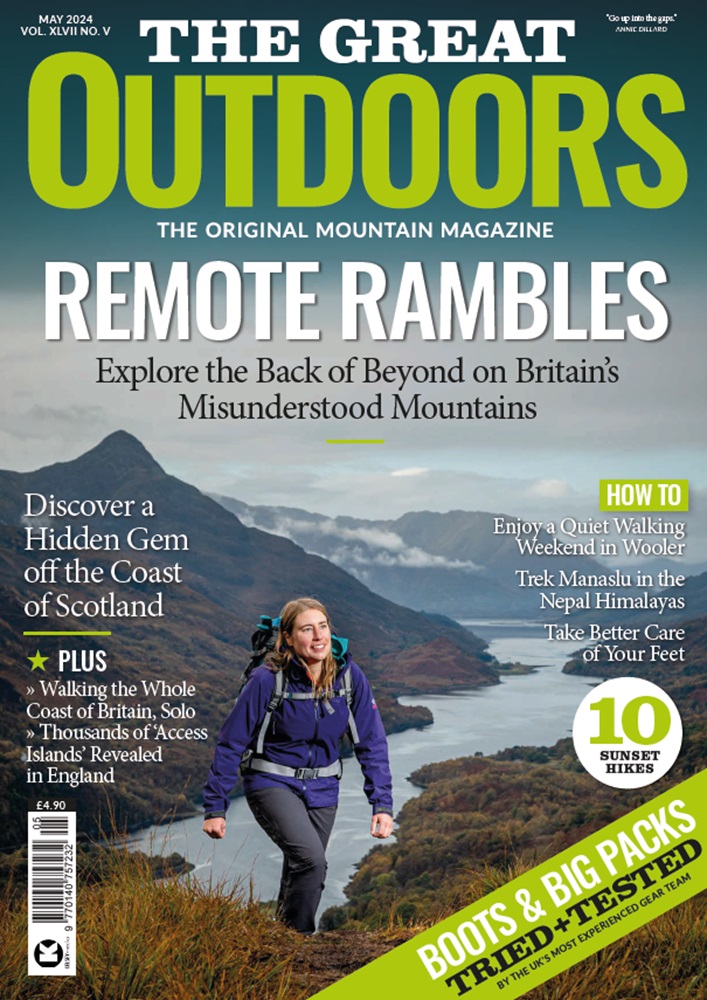These backpacks are in the 55 to 65 litre grouping and are designed for backpacking, as opposed to daytrips, outings where you need to carry a shelter, sleeping bag and mat, a stove, food and spare clothing. The best backpacking packs and their contents can make or break any backpacking trip. Poorly balanced packs that don’t fit you – or your gear – are not only uncomfortable but could potentially be dangerous.
Your pack should fit your body shape well and be big enough to carry the load. We recommend you try packs on in person to find one that fits your shoulders, back length and hip measurements well. A pack should be fitted so that most of the weight is carried on the hips. If you are shopping online, it’s important that you take accurate measurements – or get someone to help you do so. While many packs are made adjustable, not all adjustability is made equal.
Different people want different things in a pack. Some are looking to shave weight, and so a smaller or frameless pack may be attractive. Others are looking for more comfort at camp after you’ve pitched your tent, or breathability while walking, and might opt for a larger capacity or a suspension back system to suit. Carefully consider the materials the pack is made of – some fabrics are more abrasion or water resistant, while others (like mesh, for example) allow the water to drain fast but are prone to snagging.
How your gear is organised is also important. Many travel or expedition-orientated packs come with several built-in compartments, which can either be useful, or confusing depending on your preference – and they will also add weight. Hipbelt pockets can be useful to keep phone, camera and snacks to hand. Side pockets are useful for water or fuel bottles, tent poles and the like. A lid pocket is useful for lunch, a map or other navigation tools, perhaps goggles or gloves. Having all these to hand means you are more likely to use them, but lots of external pockets can become a nuisance on very steep or technical ground. You can learn more about how to pack a backpack from Chris Townsend’s expert skills advice in The Great Outdoors magazine.This test includes a world-first: a pack designed specifically for plus-sized hikers. This speaks to how pack innovations are increasingly accommodating for all body shapes and sizes and the differences between the backpacking needs of men and women.
Our picks of the best backpacking packs 2024
- Granite Gear Crown 3 60 – $220 | £190 (available from Ultralight Outdoor Gear) – Chris’ best buy
- Gregory Packs Amber Plus Size 65l – $239.95 | £200 (available from Gregory Packs) – Francesca’s best buy
- Mountain Laurel Designs Exodus 55l – $245 | £199.15 (from Mountain Laurel Designs) – recommended
- Sierra Designs Gigawatt 60L – $149.95 | £130 (available from Sierra Designs) – recommended
- Osprey Exos Pro 55 – $290 | £230 (available from Ellis Brigham) – recommended
- Lowe Alpine Women’s Sirac ND65L Trekking Pack – $165 | £150 (available from Amazon) – recommended
- Alpkit Pacific Crest 65l – $119.99 | £84.99 (available from Alpkit)
- Jack Wolfskin Highland Trail 55+5 – $299.95 | £245 (available from Jack Wolfskin)
- Atom Packs The Mo 60 – $310 | £285 (available from atompacks.co.uk) – TGO Gear Award winner
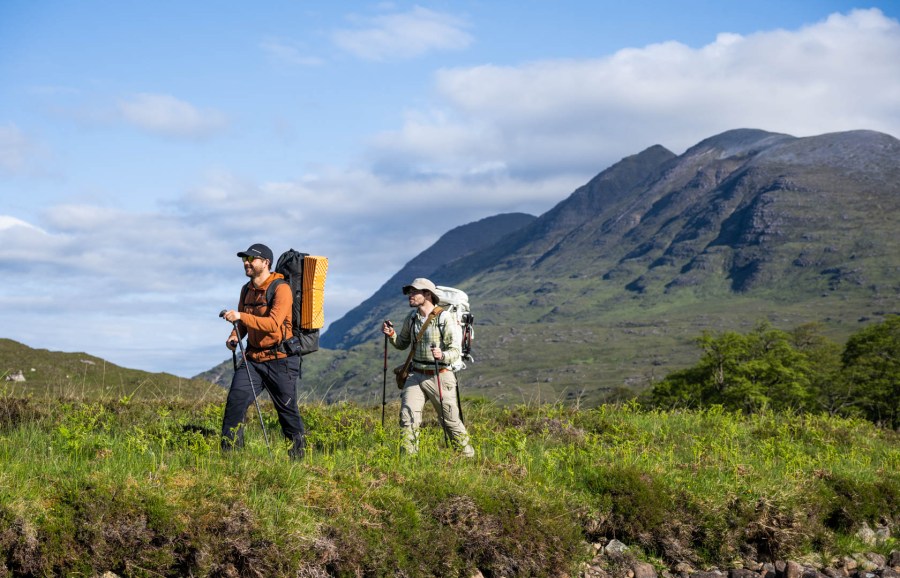
How we test
Chris tested these packs on trips in the Cairngorms with plenty of ascent and rough terrain in snow, rain, high winds and occasional sunshine in the autumn, winter, and early spring.
Francesca tested these packs on a number of overnight backpacking routes with plenty of ascent and rough terrain in snow, rain and high winds, as well as unseasonably milder days in the Southern Uplands, Eryri (Snowdonia), the Lake District and the Peak District, throughout late winter and spring.
Carey ventured into the North West Highlands of Scotland for his backpack testing, hiking for three days on the famous Fisherfield Round.
The best backpacking packs
Here’s our list of the best backpacking packs tested. We’ve looked at four men’s packs and four women’s or unisex packs from the likes of Osprey, Gregory, Mountain Laurel Designs and more. To find out more about each pack, please see their full reviews.
Atom Packs The Mo 60 – Best Buy
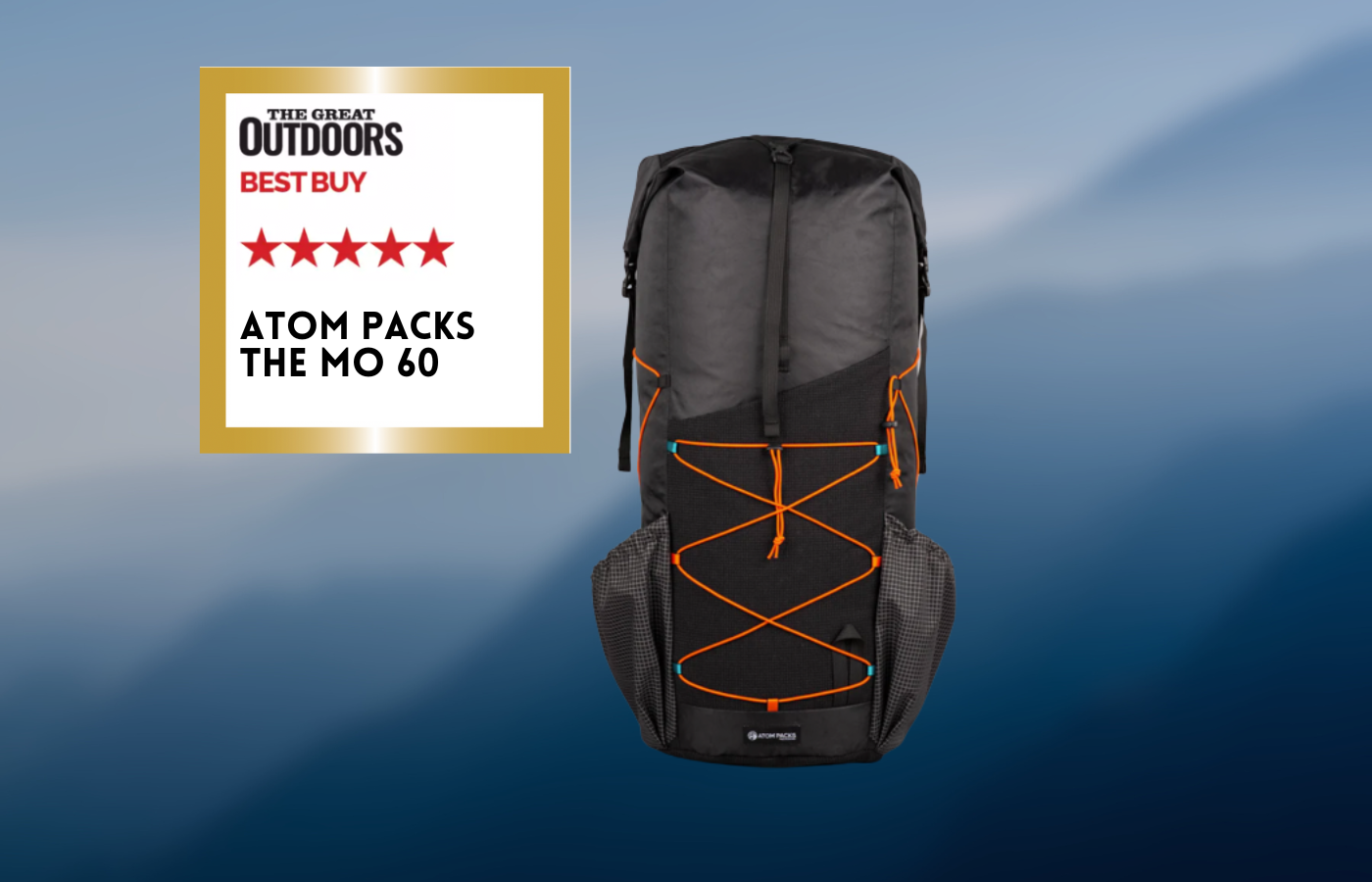
Rating: 5
Pros: Durable, light, well-crafted
Cons: Expensive
Price: $310 | £285
Weight: 930g
Capacity: 60L | Materials: Ecopak EXPX200, 210D Robic Extreema pockets, straps and hipbelt, Dyneema mesh, 500D nylon back panel | Closure: rolltop | Back: fixed length | Hipbelt: cushioned, adjustable, 4 inches | Pockets: two stretch mesh on harness, two side pockets, 5L front pocket | Sizes: S, M, L, XL and various hipbelt sizes | Men’s version: unisex
Atom Packs was created by Tom Gale, an experienced long-distance hiker who has completed the Appalachian, Pacific Crest, and Continental Divide Trails in the USA and the Te Araroa in New Zealand. This particular model, one of the latest from the brand, is capable of managing loads of up to 19kg. It features a durable but lightweight fabric, a 4-inch wide adjustable hipbelt, EVA foam lumbar pad, removable closed cell foam back panel and various pockets. In our tests, the Mo VX60 pack was superb, handling loads extremely well while feeling comfortable to wear. It was also remarkably light to carry but also offered capacious storage. This pack can be customised, so there’s potential control over fabrics, colours, and features.
Read Chris Townsend’s Atom Packs Mo EP50 review.
Granite Gear Crown 3 60 | Men’s best buy
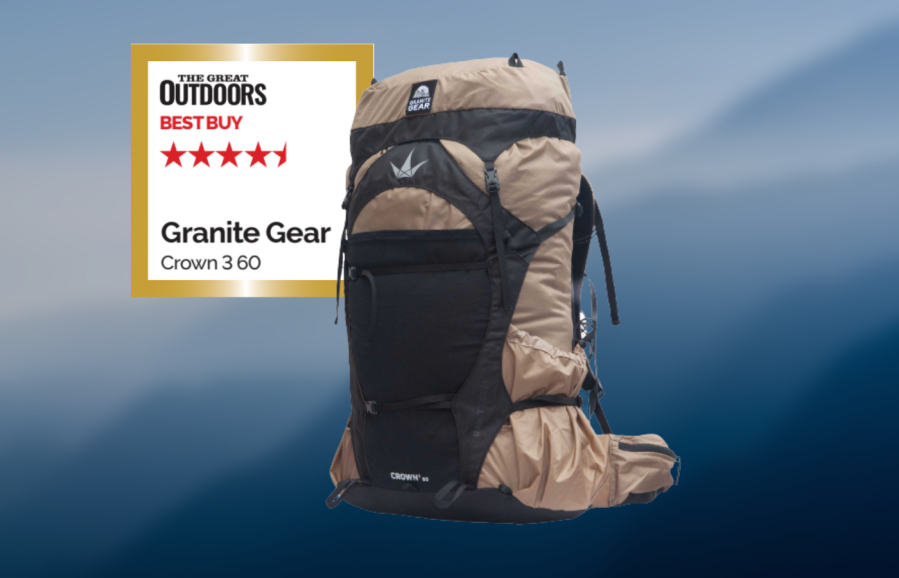
SQUIRREL_BUTTON_12925689
- Rating: 4.5
- Pros: adjustable hipbelt, compression straps, pockets, low weight
- Cons: tall and narrow with only top access
- RRP: $220 | £190
- Weight: 1290g (regular)
Capacity: 60 litres | Materials: 100D & 210D high tenacity nylon | Closure: detachable lid, roll-top | Back: compression moulded polyethylene framesheet, moulded foam panel | Hipbelt: adjustable dual density foam | Pockets: zipped lid, 2 drawcord-closed side, stretch mesh front, 2 zipped hipbelt | Features: side compression straps, front compression straps, ice axe/trekking pole loops, loops on the base for attaching cord | Sizes: short, regular, long | Women’s version: yes
The Crown 3 60 is lightweight but not so light that it feels flimsy or has tiny, fiddly components. For backpacking it should last well. Unless you’ll be carrying very heavy loads, it’s an excellent choice.
This backpack is The Great Outdoors‘ ‘Best Buy’ – one of the best backpacking packs on the market. Read Chris’ full review of the Granite Gear Crown 3 60.
Gregory Packs Amber Plus Size 65l | Women’s best buy
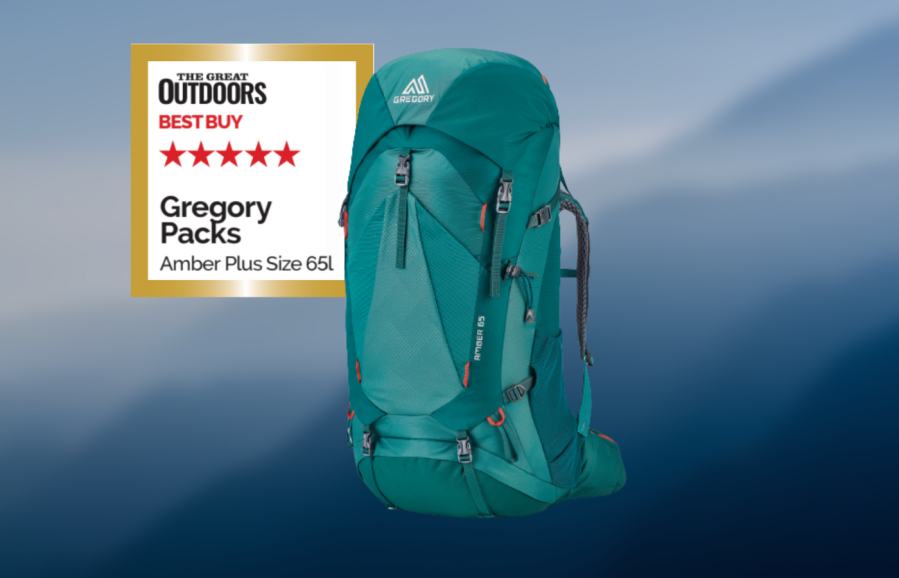
- Rating: 5
- Pros: weight-to-comfort ratio, adjustability, storage
- Cons: none
- RRP: $239.95 | £200
- Weight: 1613g (one size)
Capacity: 65l | Materials: Body: 210D nylon, 420D high-density nylon. Base: 840D Ballistic Polyester. Harness/Hipbelt/Lumbar: multi-density closed and open cell foams. Chasis Support: Alloy Steel Frame. Lining: 40% Post-consumer Recycled 135d Polyester with Pfc-free Dwr | Closure: Quick-pull drawcord closure and top webbing compression with floating zippered lid | Back: Wishbone alloy frame, VersaFit adjustable suspension | Hipbelt: FitTune adjustable hipbelt with extended length in the plus size | Pockets: Main body with removable divider plus dual access from top and bottom, floating zippered lid, dual side mesh pockets featuring side trail access, front oversized stretch mesh pocket, hydration sleeve, dual trekking pole/tool attachment points with bungee closure system, dedicated zip pocket for raincover | Features: plus size fit, compartment solutions, breathable padding | Sizes: One size | Men’s version: Katmai Plus 65 version available
With the Amber Plus Size 65, Gregory has designed a pack with plus-sized bodies in mind that is adjustable enough to suit many shapes. This pack is so comfortable and well-equipped, it’s worth its weight. This backpack is The Great Outdoors‘ ‘Best Buy’ – one of the best backpacking packs on the market.
Read Francesca’s full review of the Gregory Packs Amber Plus Size 65l.
Mountain Laurel Designs Exodus 55L | Recommended

- Rating: 4.5
- Pros: lightweight, excellent construction
- Cons: sizing options, cost of personalistion
- RRP: $245/£199.15 (plus additional costs for optional add-ons)
- Weight: 596g (size medium, inc. additional sternum strap, 10″ of black 1/8″ bungee cord, 2 mini cord clips and 3 cord locks)
Capacity: 55l | Materials: UltraGrid 200d RipStop | Closure: roll top | Back: frameless | Hipbelt: Large padded lightweight DX 210D Black Ripstop hip-belt wings (separate from shoulder strap so can be cut off) with 1″ webbing and optional removable hip pockets | Pockets: main compartment | Features: seam taped construction, curved side panels move load closer to upper back | Sizes: M – XL | Men’s version: unisex
Despite some scepticism regarding frameless packs, the weight-saving measures and stabilising straps of the MLD Exodus resulted in a comfortable carry. It is also incredibly well-crafted for a durable yet ultralight pack.
This backpack is recommended by The Great Outdoors. Read Francesca’s full review of the Mountain Laurel Designs Exodus 55l.
Sierra Designs Gigawatt 60L | Recommended
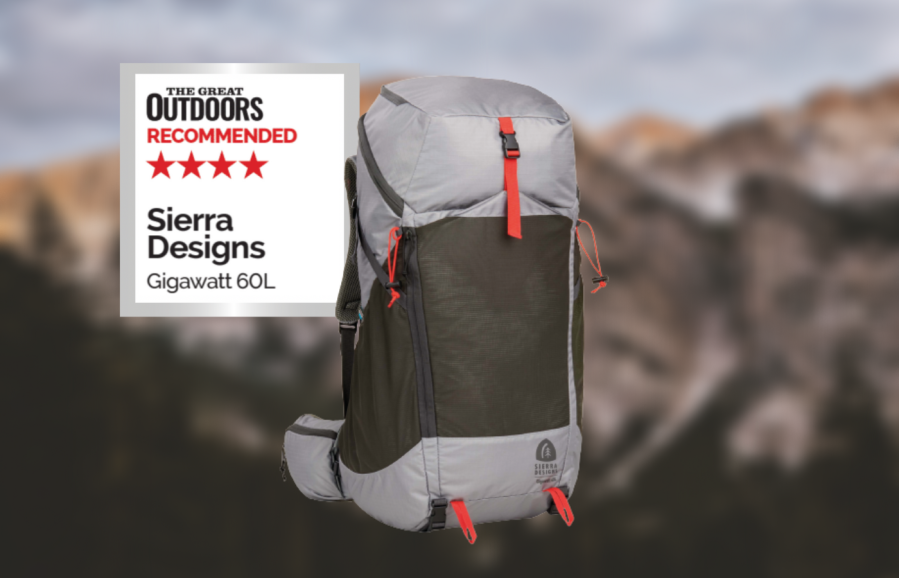
SQUIRREL_BUTTON_12872849
- Rating: 4
- Pros: easy access, pockets, cost
- Cons: non-adjustable closure, weight
- RRP: $149.95 | £130
- Weight: 1830g
Capacity: 60 litres | Materials: 300 x 400D polyester ripstop | Closure: zip-round top, side zip | Back: perimeter frame, framesheet, padded panel | Hipbelt: padded, shaped | Pockets: zipped lid with inner compartment, 2 stretch mesh side, stretch mesh front, 2 zipped hipbelt | Features: side compression straps, base straps, ice axe/trekking pole loops, internal hydration sleeve | Sizes: one, adjustable for torso 16-21 inches (40-53cm) | Women’s version: unisex
This new pack – Sierra Designs Gigawatt 60l – is comfortable with heavy loads and the price is low for a pack of this quality. It is heavy though. There are much lighter packs than the Gigawatt that perform as well or better but they are also much more expensive. For the cost, this is an excellent pack.
This backpack is recommended by The Great Outdoors. Read Chris’ full review of the Sierra Designs Gigawatt 60L.
Osprey Exos Pro 55 | Recommended
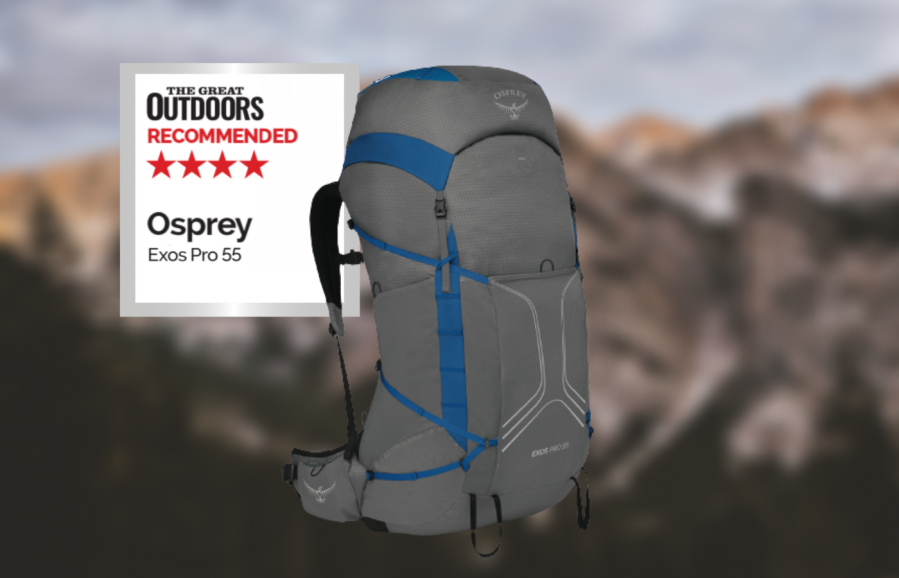
- Rating: 4
- Pros: ultralight, adjustability & sizes, pockets
- Cons: quite expensive, limited load capability
- RRP: $289.95 | £230 (Available from Osprey)
- Weight: 950g (S/M)
Capacity: S/M 55 litres, L/XL 58 litres | Materials: 100D Nylon x 200D UHMWPE (ultra-high-molecular-weight polyethylene) ripstop | Closure: detachable lid, buck | Back: wire frame, tensioned mesh panel | Hipbelt: padded, shaped | Pockets: zipped lid, 2 stretch mesh side, stretch mesh/fabric front, zipped hipbelt, zipped open top hipbelt | Features: side compression straps, ice axe/trekking pole straps, inner hydration sleeve, front and lid attachment loops | Sizes: men S/M, L/XL, women (Eja Pro) WXS/S, WM/L | Women’s Version: Eja Pro
Weighing less than a kilo the Osprey Exos Pro 55 (Eja Pro55 for women) really deserves the description ultralight. This doesn’t mean it’s a minimalist pack though. It has all the features of the other packs reviewed, just made with lighter, thinner materials. In fact, it’s very similar in design to the heavier Exos 58. For backpackers looking to cut weight, the Exos/Eja Pro 55 is excellent.
This backpack is recommended by The Great Outdoors. Read Chris’ full review of the Osprey Exos Pro 55.
Lowe Alpine Women’s Sirac ND65L Trekking Pack | Recommended
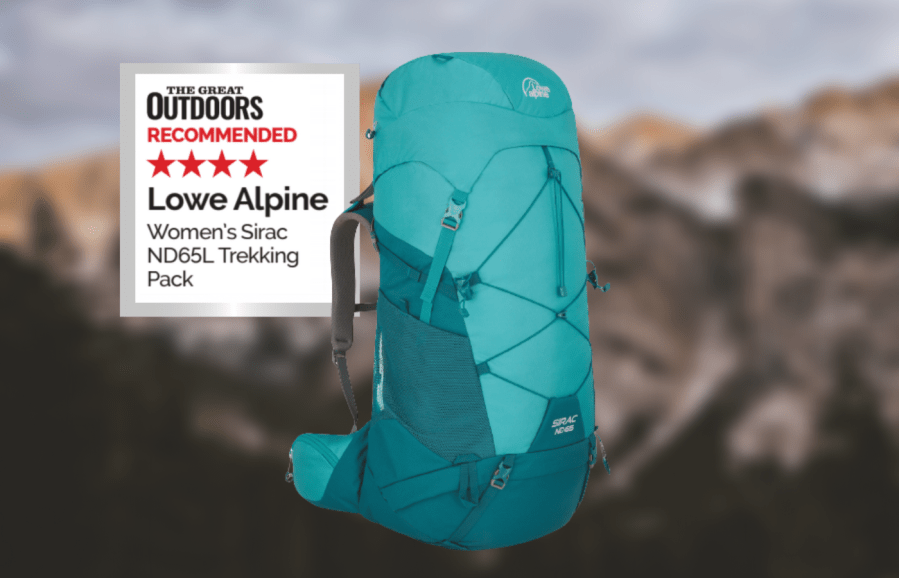
SQUIRREL_BUTTON_12857255
- Rating: 4
- Pros: freedom of movement, ventilation
- Cons: weight, small hip pockets
- RRP: $200 | £150
- Weight: 1918g
Capacity: 65l | Materials: 50% recycled 420D Dobby and 100% recycled 600D PW / HydroShield | Closure: drawcord with clipped lid | Back: Adjustable Air Contour™ X carry system | Hipbelt: Air Contour™ X hipbelt with floating pockets | Pockets: Dual access main compartment with removable divider separating lower sleeping bag compartment, zipped lid, two side stretch mesh pockets, elastic front stash, internal hydration sleeve, lash points, floating hipbelt pockets, integrated raincover pocket | Features: narrow design, elastic front stash | Sizes: One size (back length: 17-19″ / 43-48cm) | Men’s version: Yes
This pack is incredibly comfortable given its size and capacity, and is the heaviest pack in this test. The narrow fit (ND stands for Narrow Design and is Lowe Alpine’s answer to packs for those with slighter body shapes) was unrestrictive and allowed for good upper body movement and balance across rough terrain.
This backpack is recommended by The Great Outdoors. Read Francesca’s full review of the Lowe Alpine Women’s Sirac ND65L Trekking Pack.
Alpkit Pacific Crest 65l | Best value

- Rating: 3.5
- Pros: affordability, adjustable back system, accessibility
- Cons: shoulder straps, raincover
- RRP: $119.99 | £84.99
- Weight: 1,789g (one size)
Capacity: 65l | Materials: Main fabric: 420D nylon. Base: Reinforced 600D polyester. Rain cover: 210D ripstop polyester. DWR: PFC-free C0 | Closure: double drawchord plus floating lid | Back: adjustable back system | Hipbelt: cushioned | Pockets: main compartment with detachable divider, zipped lid, side zipped pocket, two mesh side pockets, two mesh hip pockets, hydration sleeve | Features: durable fabrics, zipped side pocket | Sizes: One size | Men’s version: unisex
Overall, this is an incredible pack for the price but it might not be one of the best backpacking packs on the market. Alpkit says they’ve designed this pack for the weight-conscious trekker – and although it is the second heaviest pack in this test it does benefit from weight-saving features you might expect from much more expensive models.
Read Francesca’s full review of the Alpkit Pacific Crest 65l.
Jack Wolfskin Highland Trail 55+5
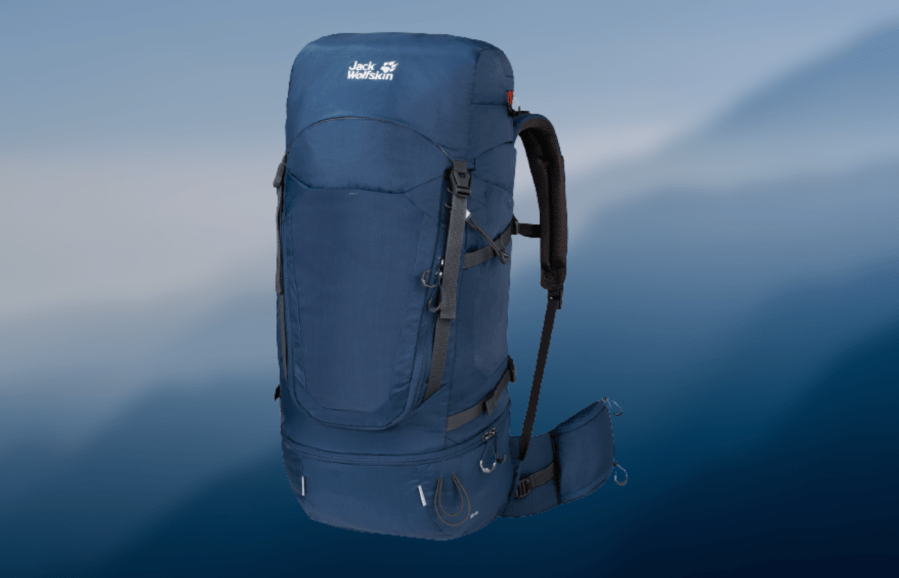
SQUIRREL_BUTTON_12925691
- Rating: 3.5
- Pros: recycled materials, access
- Cons: heavy, expensive
- RRP: $299.95 | £245
- Weight: 2170g
Capacity: 55 + 5 litres | Materials: recycled polyamide shell, polyester lining | Closure: detachable lid, zipped front panel | Back: adjustable, X frame, framesheet, padded panels | Hipbelt: padded, shaped | Pockets: zipped inner and outer lid, 2 stretch mesh side, stretch mesh front, zipped hipbelt | Features: lower compartment, rain cover in base, side compression straps, ice axe/trekking pole loops, inner hydration sleeve | Sizes: 1 men adjustable 46-58cm, 1 women adjustable (Highland Trail 50 + 5) XS-M | Women’s version: yes
The Highland Trail is a well-specified pack that carried loads well and it is made from PFC-free recycled fabric. It’s also heavy and expensive. Overall, there’s little wrong with this pack other than the weight. But that is a big factor when there are lighter packs that perform as well. If the price was low that could cancel out the weight factor to some extent, but this was also the most expensive men’s pack tested.
Read Chris’ full review of the Jack Wolfskin Highland Trail 55+5.

